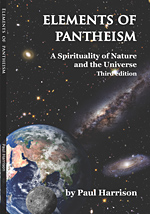There’s nothing so
stimulating as face-to-face groups, and UU congregations are ideal
places for forming pantheist/nature-reverence groups.
If you
already belong to a UU congregation, you will find that experience
deepened and enriched if you form or join a pantheist/nature-reverence
group. It’s often said that as many as a third of UU members may be highly
responsive to a nature-oriented focus, especially one that can
accommodate spirituality and humanism.

Conejo Valley UU pantheism/nature-reverence group
picnic
If you are pantheist/nature-reverent and are interested in forming a local
group, there are few settings as favourable as a UU congregation. You will find
here probably the largest social group of humanists, pagans, atheists and
pantheists in your area. You will also find liberal, open-minded and highly
tolerant adherents of some other faiths who may not come along to your meetings,
but will regard it with benevolent curiosity rather than hostility. Attendance at UU congregations is free
and pledging membership is voluntary. Almost everyone starts with a
period of experimental attendance which may last for months or even
years.
If you are a pantheist/nature-reverent with younger children, you may
find your local UU congregation one of the few sources for broad-minded
out-of-school education as well as a valuable source for religious
community identification.
Concept
What you will be forming can be
described
as an adult religious education group, or a discussion, celebration and activity group.
It will be intended for everyone interested in a
naturalistic reverence and concern for nature and the wider universe. The group
may be of interest and appeal to people who call themselves pantheists,
naturalistic pagans, religious humanists, religious naturalists, deep
ecologists, environmentalists and other synonymous terms.
Permission
Make sure you get the proper permission, if needed, of the relevant committee of your
congregation, eg the program committee. Your group may start its life as an
adult religious education course, and later perhaps transform into an interest
group.
Gaining members
If you are a newcomer, don’t try to start a group
immediately: become familiar with and to the congregation first. Get to know who
might be interested – for example any regular hikers, or people interested in
the environment, or people with naturalistic views. Go along to "New UU"
meetings and "build your own theology" meetings, express your views and listen
to those of others.
You can also
try to attract members from the wider community to your meetings – this will
also benefit your UU congregation in bringing in new people with a different
range of interests, who may be interested in joining the congregation.
Publicising your
meetings
Announce your meetings in your congregation’s
calendar, newsletter and
order of service.
Order World Pantheism leaflets – or
print out the PDFs available on
the Internet – and leave them on your congregation’s literature rack or table.
The leaflet on World Pantheism
and Unitarian Universalism is especially useful. Make a handout about your
meetings and put it on the literature rack or table.
Themes
It’s important
before you start to have a preliminary idea of what your group is
going to do and discuss, and what format it will take before starting.
For the first sessions, it may help at
least for part of each meeting to have an introductory course. A good basis for
this would be Elements of Pantheism by Paul Harrison
– the only comprehensive
but short and accessible introduction to pantheism/nature reverence in print. You could
work through the book chapter by chapter.
Other books that
can be used as the basis for a subsequent "course" are
The Circle of Simplicity by Cecile Andrews, which examines practical
green lifestyles.
Or try
Ursula Goodenough’s The Sacred Depths of Nature, which gives a brief
stage-by-stage presentation of science’s picture of evolution with some
spiritual reflections.
Meeting Formats
It helps also to have a standard meeting
format that is spiritually satisfying, allowing for social and intellectual
exchanges as well as sensory and emotional experiences. You may wish to modify the format in
the light of members’ wishes and suggestions.
Bear in mind that you will be wanting to
engage the widest possible range of members so beware of biases such as getting too deeply into
florid supernatural-sounding ritual – and also of turning into a dry debating club
without any emotional, personal or aesthetic content. Either of these extremes
can reduce your broader appeal.
You may wish to hold the meetings at a member’s home, or in a room
of the building where your congregation holds it services.
Here’s a format that has worked well at the Conejo Valley Unitarian
Universalist Fellowship in Thousand Oaks, California.
Gathering call
UUs and
pantheists are mavericks so timely starting can be a problem.
Try sounding a windchime or gong to indicate that it is time to meet.
Music and decor
As people arrive a CD is playing of natural sounds – it might be
birdsong, whalesong, frogsong, running water, ocean waves, thunderstorm. There
are many CDs available with this kind of music and you can find a selection
here.
At the center of the meeting circle there may be various natural
objects – beautiful rocks, tree bark, seeds, flowers, candles.
Spiritual Checkin
We begin with a familiar process in UU
small groups – the checkin. Instead of talking generally about what’s been
happening in our lives, we focus on deeper experiences, discoveries and insights
we have had since we last met, whether of life, nature, science, or ethics.
Some people
use this opportunity for “Show and Tell†and bring in photographs they
have taken, stimulating articles they have read, or some natural item they have
collected – a rock, a flower, a seed. But please
observe all rules about collecting – don’t take native flowers or seeds unless
they are very common.
Discussion topic
As indicated
above, it may be best to
start out with a structured course in pantheism/nature-reverence, at least as a
part of each meeting.
Questions and Answers
If there
are newcomers you might want to allow five or ten minutes
for a very brief summary of what pantheism/nature-reverence is and involves, and a chance for them to ask questions.
You might find the
Pantheist
FAQS and the World
Pantheist Movement FAQS useful background.
Guided meditation
At some
meetings we set aside a time of five minutes or so when members can reflect to
natural sounds, or guided by words about our roots in and connections with
cosmos, sun, fire, air, rocks, soil, water, life and other central features of
the natural universe.
Choice of next topic, outings, suggestions
for development
You might want to choose the topic for the next meeting at the
end of each meeting and discuss possible outings and actions to publicize your
group or attract new members.
Activities
It’s also a good idea not just to sit
there talking every time, but to spice up the year with outings and activities.
Hikes:
If your congregation does not have one, you
might want to start up a hiking group, taking care to offer easy and moderate
hikes so as to maximize participation.
Nature watch:
Arrange outings to
observe special events in nature – meteor showers, full moons, auroras,
migrations of birds, butterflies and whales, seasonal blossomings and autumn
leaf displays.
Site outings:
Members may be interested in visits to science and nature
exhibits, botanical gardens, green
buildings, recycling centers, water and sewage plants, composting facilities.
Green Action
Once you have got started, your group
may want to get involved in the practical side of pantheism/nature-reverence.
You may want
to talk about practical changes you can undertake to make your own life more
sustainable – at home, in the garden, at work, in transport and travel. You can
use the World Pantheism "Greenup
your life" page as a source of practical local links for any location in the
USA.
You may want to join in
volunteering for some local environmental project such as creating a communal
garden, restoring damaged habitats, or planting native species.
More ambitiously, you may
want to get involved in helping your congregation achieve certification with the
Green Sanctuary Program, which involves infusing each department of your
congregation’s life with environmental awareness – from religious education and
services, through sustainable office supplies and energy conservation, to wildlife-friendly landscaping
with native species.
World Pantheism membership and UU membership
It’s important to regard these two memberships as
voluntary and distinct. The two organizations serve different purposes and are
entirely complementary.
Just as there is no
obligation on a person attending a UU congregation to officially become a
member, so there is no obligation on anyone attending a
pantheism/nature-reverence group to become a WPM member. Both UU congregations and the
World Pantheist Movement meetings are freely open to newcomers. Both also encourage membership, but they do so by way of gentle
encouragement and information. For example, World Pantheist Movement members may
wish to give our leaflets to people you know may be interested, and to bring
along your Pan magazine for others to look at.


